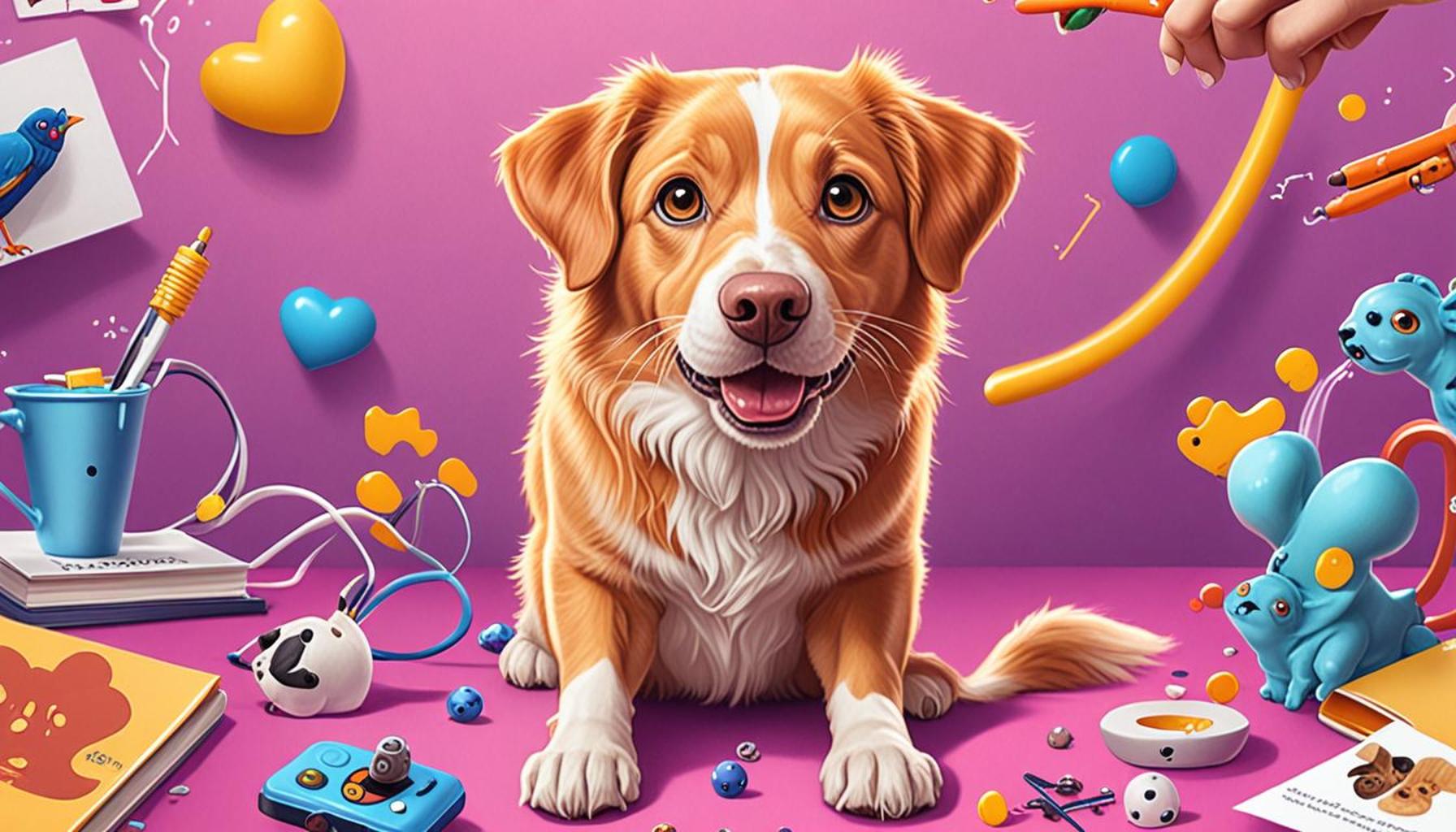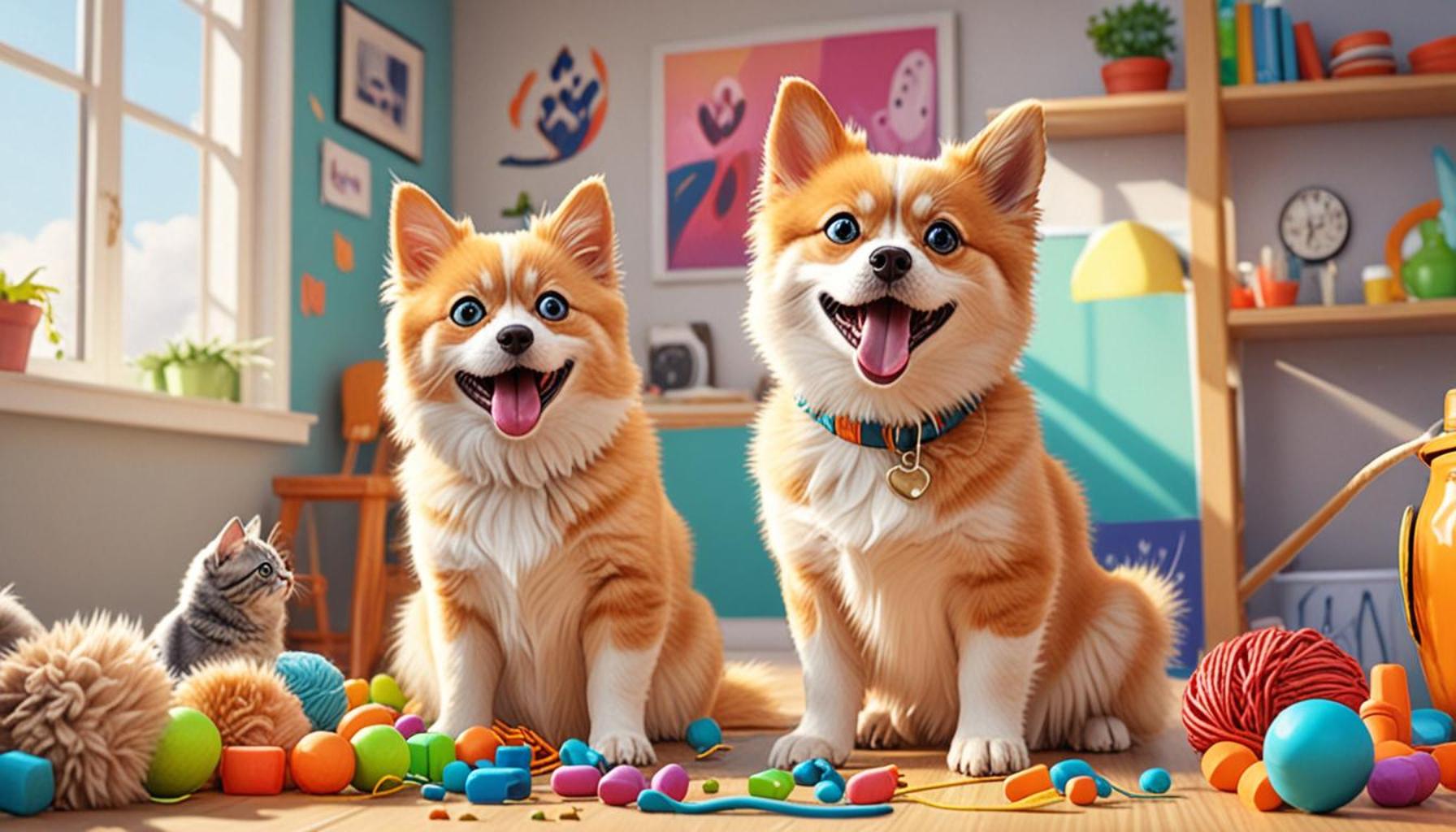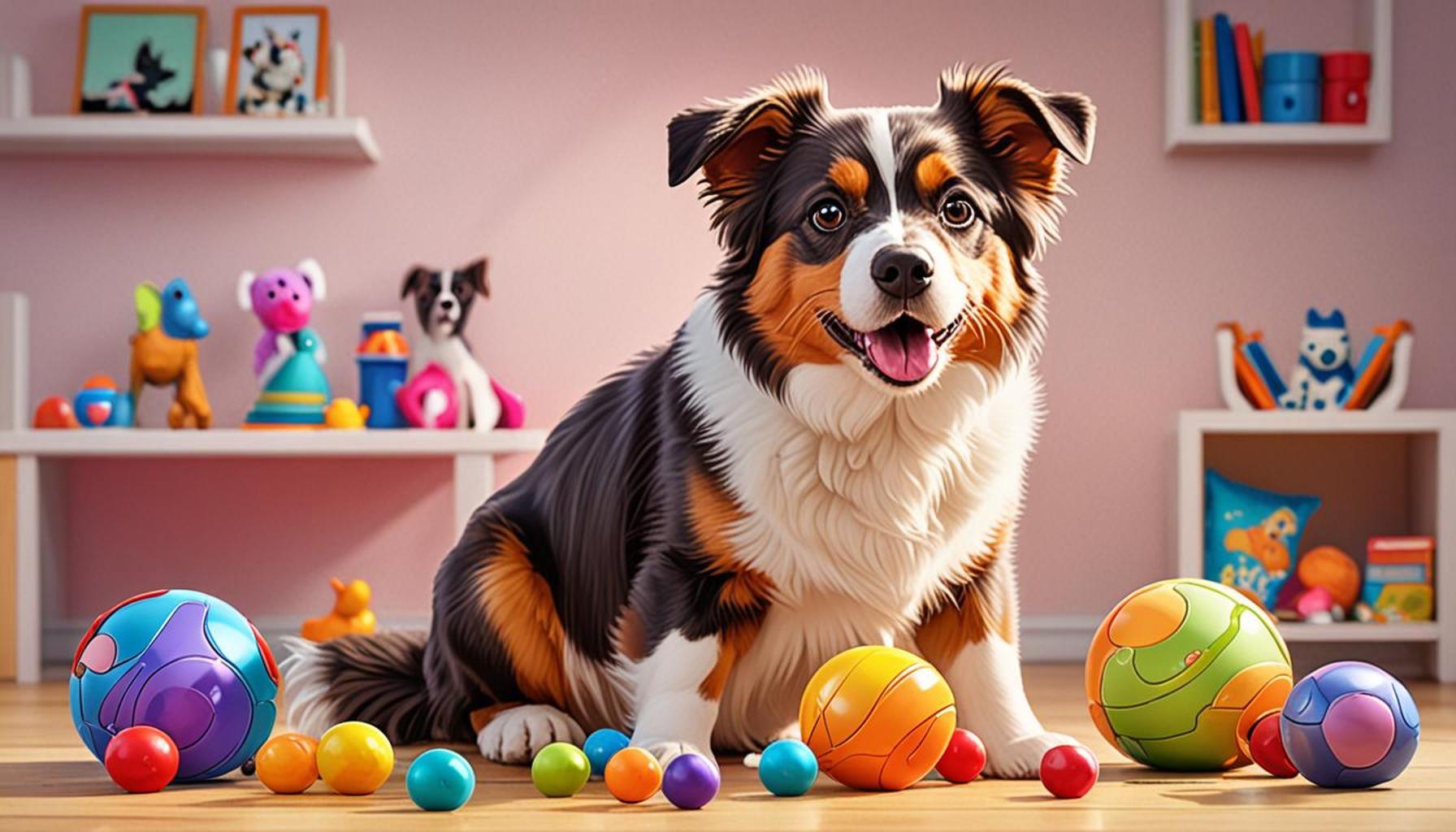How to Train Pets with Clicker Techniques

The Power of Clicker Training: A New Approach to Pet Training
Many pet owners often feel overwhelmed at the prospect of training their pets effectively. The thought of instilling good behavior can seem like a monumental task. However, clicker training offers a refreshing, efficient approach that not only simplifies the learning process but also enhances the emotional connection between pets and their owners.
Fundamentally, clicker training operates on the principle of positive reinforcement, which emphasizes rewarding good behavior instead of punishing bad actions. The training device itself—a small handheld clicker—produces a distinctive sound that serves as a marker for desirable behaviors. This immediate feedback is invaluable; when a pet performs a behavior correctly, the click directly communicates that they have done something right.
Why Choose Clicker Training?
Several features make clicker training particularly beneficial:
- Immediate Feedback: The clicker provides a quick response, ensuring that pets immediately associate the click sound with their actions. For example, if you are training a dog to sit, you can click the moment its bottom touches the ground, reinforcing the behavior without delay.
- Positive Reinforcement: By focusing on rewarding desired behaviors, pets learn in a stress-free environment. Rather than using harsh corrections, rewards such as treats, praise, or playtime fuel motivation. This method is particularly effective when training fearful or anxious animals, as it builds their confidence.
- Versatility: Clicker training is not exclusive to dogs. Cats, rabbits, and even birds can thrive under this system. For instance, many cat owners have found success teaching their felines tricks like high-fives or jumps using the clicker method.
To embark on your clicker training journey, it’s essential to gather a few basic supplies: a clicker, some small treats your pet enjoys, and a quiet space where distractions are minimized. Start with simple commands and gradually increase the complexity as your pet begins to understand. With patience, consistency, and a sprinkle of fun, you’ll soon witness your pet learning new behaviors remarkably quickly.
Not only does clicker training foster a stronger bond between pet and owner, but it also creates a joyful environment for learning. As you explore this innovative approach, you’ll discover a world where effective communication flourishes, paving the way for a happier and more connected relationship with your beloved companions.
DIVE DEEPER: Click here for more insights
Getting Started with Clicker Training
Embarking on the journey of clicker training can be both exciting and rewarding for you and your pet. To ensure effective training, it is crucial to understand the fundamental steps involved in implementing this technique. The clicker method emphasizes clear communication and fosters a positive learning environment, which can greatly enhance your pet’s ability to absorb new commands and tricks. Below are some essentials to kickstart your clicker training experience.
Essential Steps for Effective Clicker Training
Before you begin, consider following these key steps to make the most of your clicker training sessions:
- Choose the right clicker: Select a clicker that feels comfortable in your hand and produces a sound your pet responds to positively. There are many types available, from traditional handheld clickers to those with ergonomic designs dedicated to ease of use.
- Establish a quiet training environment: Find a distraction-free zone where your pet can focus solely on the training process. A calm space allows your pet to absorb commands without the interference of noise or bustling activity.
- Pair the clicker with rewards: Initially, it is essential to click and immediately reward your pet with a treat after the sound. This association builds a strong connection in your pet’s mind, ensuring they will understand that the click means something good is coming.
- Start with basic commands: Choose simple behaviors that are easy for your pet to learn, like “sit,” “stay,” or “come.” As your pet masters these commands, you can gradually introduce more complex tricks.
- Use consistent cues: Always use the same verbal cues for each command you are trying to teach. Consistency is key as it helps your pet associate your word with the desired action over time.
As you progress, remember that patience is a critical ingredient in clicker training. It may take time for your pet to connect the dots, and some animals may learn at a different pace than others. Celebrate small victories throughout the journey, as this will not only reinforce good behavior but can also strengthen the bond you share with your pet.
Engagement and playfulness should underscore every clicker training session. Dogs and cats alike thrive in an environment that is enjoyable and interactive. Incorporate praise, playtime, and other forms of positive reinforcement into your sessions to make learning a delightful experience. As you explore each successful milestone in your pet’s training, you’ll quickly realize that the relationship you are nurturing extends far beyond commands and tricks; it becomes a true partnership built on trust and understanding.
In conclusion, the beauty of clicker training lies in its simplicity and effectiveness. By harnessing the power of positive reinforcement, you can pave the way for a new chapter in your pet’s education, where they are eager to learn and grow alongside you.
| Training Method | Benefits |
|---|---|
| Positive Reinforcement | Using a clicker to mark good behavior creates a clear communication channel, enhancing learning. |
| Immediate Feedback | Clicker training allows for instant reinforcement, making it easier for pets to associate commands with actions. |
| Effective Learning Curve | Pets respond quicker to clicker techniques compared to traditional methods, encouraging consistent practice. |
| Bonding Experience | Interacting through this method fosters a deeper bond between pet and owner, enhancing overall well-being. |
The method of clicker training is especially commendable, as it emphasizes the importance of consistency and clarity. Each click signifies a positive action, which not only reinforces the behavior but also sends a strong message of approval to the animal. This makes clicker training particularly effective in dealing with behavioral issues or teaching new tricks. Moreover, the versatility of clicker techniques means they are applicable to a range of pets, from dogs to cats and even small mammals. It’s crucial to maintain a routine that includes regular practice sessions, thereby ensuring that the animal remains engaged and eager to learn. In addition to fostering skill acquisition, this training method encourages pets to be more confident and independent, facilitating better social interactions with other animals and humans.
LEARN MORE: Click here for tips on teaching your cat basic commands
Advanced Clicker Training Techniques
Once you have established a solid foundation in clicker training with your pet, it’s time to explore some advanced techniques that can enhance their learning experience and introduce more complex commands. These methods will not only deepen your pet’s skills but also further strengthen the bond you share through interactive play and training sessions.
Shaping Behavior
One key advanced technique in clicker training is called shaping behavior. This method involves reinforcing smaller steps toward a more complex behavior. Instead of teaching a command like “roll over” all at once, you can reward your pet for incremental actions that lead to the final act. For instance, if your dog is learning to roll over, you can first click and reward them just for lying down, then for turning their head to the side, and gradually build up to the full roll.
Shaping allows pets to think critically about their actions and encourages them to experiment with their behavior. As a result, your pet learns to associate their efforts with positive outcomes, making the training process enjoyable and stimulating.
Clicker Training for Fearful or Stubborn Pets
Pets with anxiety or stubborn tendencies may require a tailored approach when it comes to clicker training. Applying the method of counter-conditioning can be particularly effective. This involves associating the click sound with something positive when your pet is exposed to a stressor. For example, if your dog is afraid of loud noises, you might use the clicker while they are in a calm state before gradually introducing the noise at a low level. Every time they remain calm, click and reward them. Over time, they can learn to associate the sound with positive experiences rather than fear.
Another technique is the use of conditional reinforcers, which are secondary rewards that you can introduce once your pet becomes accustomed to the clicker. For some pets, using toys, playtime, or even verbal praise can serve as additional motivators. These alternatives help keep the training dynamic and engaging, ensuring your pet remains enthusiastic about learning.
Incorporating Tricks and Fun Activities
Clicker training isn’t just about obedience commands; it can also be a great way to teach your pet fun tricks. Teaching your dog to fetch specific items, teach your cat to “high-five,” or guiding your rabbit through an agility course can all be achieved with clicker techniques. To keep sessions entertaining, consider alternating between teaching basic commands and fun tricks. This not only keeps your pet engaged but also allows you to monitor their progress in a less formalized structure.
As your pet becomes more adept, challenge them by teaching sequential behaviors—where one action leads naturally to another. For example, you could teach your dog to pick up a toy, drop it in a basket, and then sit. Each combination can be clicked and rewarded as they successfully connect the tasks. This method utilizes their growing understanding of commands while also encouraging them to think ahead.
To promote long-term success with clicker training, it’s essential to maintain a balance between structure and flexibility. Adjust training sessions based on your pet’s mood, energy levels, and responses. Remember that the ultimate goal of clicker training is to create an enjoyable learning environment that enhances your bond, ensuring both you and your pet thrive through the delightful journey of shared discovery. As you experiment with these advanced techniques, you will find that each interaction is a step deeper into the rewarding world of clicker training.
LEARN MORE: Click here for insights on vaccines and preventive care
Conclusion
In summary, clicker training represents a versatile and effective approach to pet training that emphasizes positive reinforcement and enjoyable interactions. As we’ve explored, mastering the basics and venturing into advanced techniques not only enhances your pet’s ability to learn complex behaviors but also fosters a deeper bond between you and your furry companion. From the meticulous process of shaping behavior to tailored strategies for fearful or stubborn pets, every method provides a unique opportunity to transform the training experience into a delightful journey for both parties.
Moreover, by integrating fun tricks and dynamic activities, you make the training process engaging and stimulating, allowing your pets to thrive in their learning environment. As you gain more confidence in your clicker training skills, remember that flexibility and adaptability are key. Each pet is unique, and adjusting your techniques to suit their individual needs can lead to lasting success.
With consistent practice and patience, you can unlock your pet’s full potential and embark on a rewarding path toward greater companionship. For those eager to delve further into clicker training, consider researching various methods and success stories from other pet owners. This exploration not only broadens your understanding of the technique but also ignites inspiration when encountering challenges. Ultimately, clicker training signifies not just the acquisition of skills but also the joy of shared experiences, enriching the time spent with our beloved pets.


